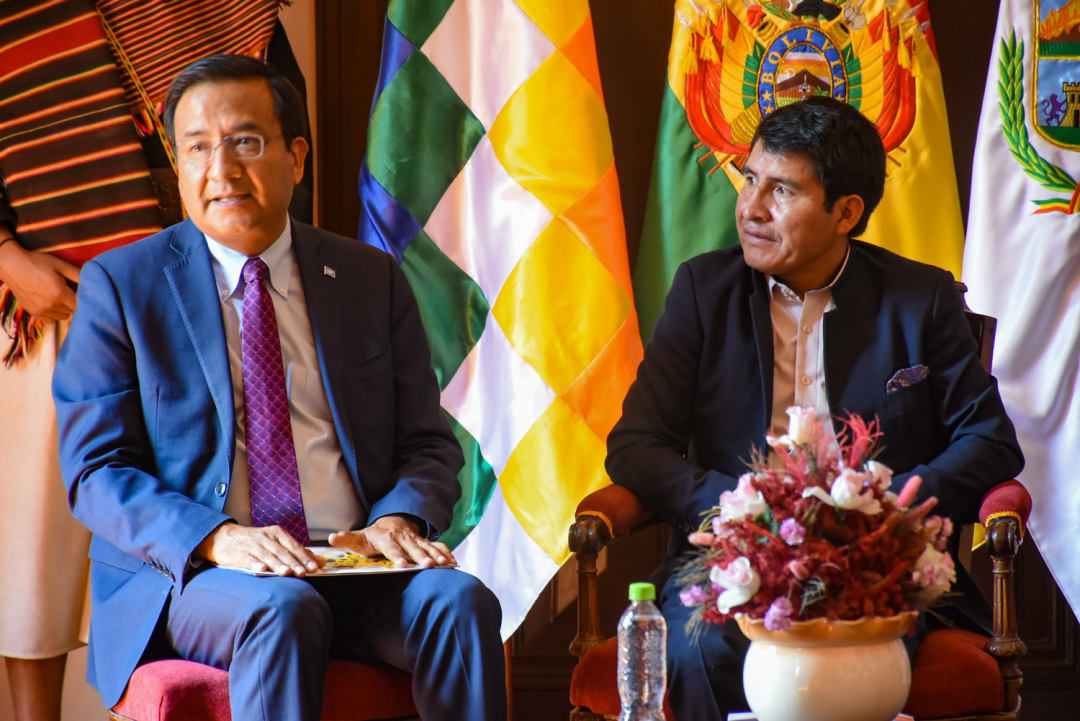Disclaimer:
Please be aware that the content herein has not been peer reviewed. It consists of personal reflections, insights, and learnings of the contributor(s). It may not be exhaustive, nor does it aim to be authoritative knowledge.
Overview
Prepared by (Name of the experimenter)
Mineral Flow: Streamlining Mining Control through Digital Innovation
On date (Day/Month/Year)
31/08/2023
What action learning plan is this activity related to?
The "Mineral Flow" experiment is related to an action learning plan focused on digital transformation and e-governance in the mining sector. It aims to improve the efficiency of administrative processes by creating a web and mobile app for the digitalization of Form 101, which monitors the transport of minerals in Chuquisaca. This plan is aligned with efforts to reduce bureaucracy, promote transparency, and enhance real-time control of strategic natural resources
Design
What is the specific learning intent of the activity? Why is it important to do this experiment?
Specific Learning Intent of the Activity:
The activity aims to understand how digitizing mining transport controls via Form 101 can improve the efficiency, transparency, and real-time management of mineral resources in Chuquisaca. It seeks to evaluate how a web and mobile app can streamline government processes and ensure better accountability.
Why Is It Important?
This experiment is crucial because it enhances e-governance by reducing bureaucracy, ensuring responsible resource management, and providing real-time data for better decision-making in the mining sector
What is your hypothesis? IF... THEN....
IF the Form 101 is digitized through a web and mobile application for monitoring mineral transport, THEN it will significantly improve administrative efficiency, reduce bureaucracy, and enhance transparency in resource management by providing real-time data and better accountability.
Does the activity use a control group for comparison?
No, it does not use a control group
Describe which actions, with whom, where, when will you (or did you) take to test your hypothesis:
Actions to Test the Hypothesis:
Development of the Digital System:
Design and implement a web and mobile app for the digitization of Form 101, making it compatible across multiple platforms (Android, iOS, Windows, etc.).
Collaboration:
Work with the Government of Chuquisaca and its Mining and Hydrocarbons Department to implement the system.
Timeline and Location:
Roll out the system across Chuquisaca’s mining sector over a specified testing phase to evaluate its efficiency.
Training and Technology Transfer:
Provide training to government officials and staff on the use of the new system for monitoring mineral transport
If you worked with partners, please choose what sector they belong to (select all that apply)
Government (& related)
What is the total estimated monetary resources needed for this experiment?
Between 1,000 and 9,999 USD
Please upload any supporting images or visuals for this experiment.
Please upload any supporting links
Results
Was the original hypothesis (If.. then) proven or disproven? In which way do the results support the original hypothesis or not?
Since the digitization of Form 101 was successfully launched by the governor of Chuquisaca and is now available as a department service, it demonstrates that the original hypothesis was proven. The system's launch supports the idea that digitization improved efficiency, reduced bureaucracy, and enhanced real-time data management for mineral transport control, providing transparency and accountability. The results align with the project's goals and are accessible on the department's website as a public service
What are the most important learning outcomes of the experiment? Are any changes recommended?
Most Important Learning Outcomes:
Efficiency Gains: The digitalization of Form 101 improved the speed and efficiency of processing mineral transport data, reducing bureaucracy.
Enhanced Transparency: Real-time data management provided better control and accountability in resource management.
User Accessibility: The system, available online, made it easier for stakeholders to access services.
Recommended Changes:
Continuous Improvement: Regular updates to the system to improve usability and performance.
Wider Integration: Expand the system to other administrative processes for further optimization
Considering the outcomes of this experimental activity, which of the following best describe what happened after? (Please select all that apply)
This experiment influenced public policy at a national or local level, This experiment led to adoption of new ways of working by our partners
Please include any supporting images that could be used to showcase this activity
Please add any supporting links that describe the planning, implementation, results of learning of this activity? For example a tweet, a blog, or a report.
Learning
What were the main obstacles and challenges you encountered during this activity? What advise would you give colleagues trying to replicate this experimental activity?


 9Industry, innovation and infrastructure
9Industry, innovation and infrastructure 12Responsible consumption and production
12Responsible consumption and production 16Peace, justice and strong institutions
16Peace, justice and strong institutions


Comments
Log in to add a comment or reply.